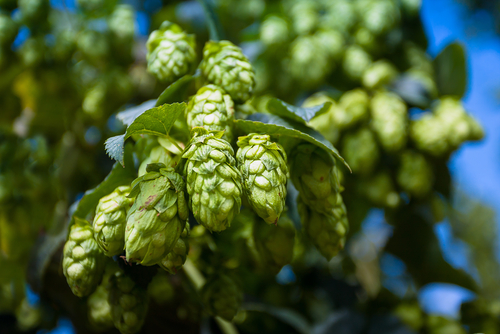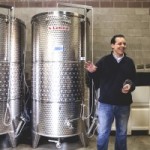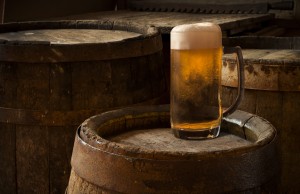Organic Beer at Microbreweries

Real organic beer isn’t just about using an organic element or two in a brew. It means everything from the hops to the malt are organic. While going organic is a growing trend, fully organic beers are still comparatively rare. Brewers such as Eel River in Fortuna, California, Peak Brewing in Maine, and the relatively new Greenstar microbrewery in Chicago, are among a select group of beer makers completely devoted to going green.
Most of these eco-friendly microbrews can be found at restaurants, grocery stores, and bars far beyond their brewery tasting rooms, making it easier than ever to taste great flavor along with hewing to a sustainable and lifestyle.
There are three different types of organic brews sold in the U.S. Beers that are labeled as 100 percent organic use only exclusively organically sourced ingredients and processing. Eel River, the first certified organic brewery in the U.S., fits this standard, offering completely pesticide and preservative free “naked” beer. The brewery was the first certified in the U.S., back in 1999. Lakefront Brewing Company in Milwaukee, Wisc., is another early adopter, creating a gluten free organic brew along with its other organic offerings. Organic labeling was once less precise: Lakefront brewer Russ Klisch joined with organic hop growers to petition the USDA to require organic hops in organic beer, helping to make organic certification applicable only to organic hundred percenters. Along with this coveted certification comes paperwork, with recipes for each brew submitted to certifying bodies, and a USDA organic certificate supplied for each ingredient. It takes a dedicated brewery to follow this path.
There are other organic classifications for beer besides the “top tier” of full organic certification.
Organic products are the phrase used for beers crafted with at least 95 percent organic ingredients if the non-organic remainder of brewing ingredients are proven unavailable in the amount and quality necessary to create the beer. As an example, it can be difficult to source enough organic Citra hops to create a full organic certified beer using them. Breweries in this category have to use non-organic ingredients that are listed in the USDA’s National List of Allowed and Prohibited Substances in order to use the “organic products” moniker.
And finally, there are also a wide selection of micro-brews that are labeled as “made with organic” ingredients. For this classification of beer, a minimum of 70 percent of the ingredients must be organic.
For beer drinkers intent on quaffing only fully certified organic brews, although brewers may be limited in number, the variety of stellar beers from porters to IPAs to ales, is wide.
Eel River offers more than their original crisp Organic Amber Ale, and their well known and full-bodied organic IPA. Porter fans can also rejoice in the brewery’s complex five-malt blend porter with a rich smoothness that includes chocolate and coffee notes. Lakefront’s Organic Belgian White offers sweet notes of organic orange peel and coriander in a heady and aromatic blend. With a potent 6.7% ABV, Lakefront’s Growing Power farmhouse ale serves up a hoppy bite edged with citrus, clove, and organic caramel. Butte Creek Brewing in Ukiah, Calif., offers four tasty organics, including an Organic Pilsner crafted with organic pale and carapils malts which shape a clean, light taste to go with its easily drinkable 4.5% ABV. Peak Brewing’s summer session ale is a tasty hybrid of wheat beer and pale ale featuring citrusy signature Amarillo dry hopping. And at Chicago’s Greenstar Brewing, the new seven barrel brewhouse is serving up organics that include Hibiscus-Ginger Wheat and a double IPA known as Skyrocket Vixen.
Perhaps best of all, organic micro-brewers often go beyond the beers themselves in a quest for sustainable resourcing, by donating spent grain, recycling, and reducing energy consumption and waste products. In short, organic brews are good for you, good tasting, and often good for the Earth.



















